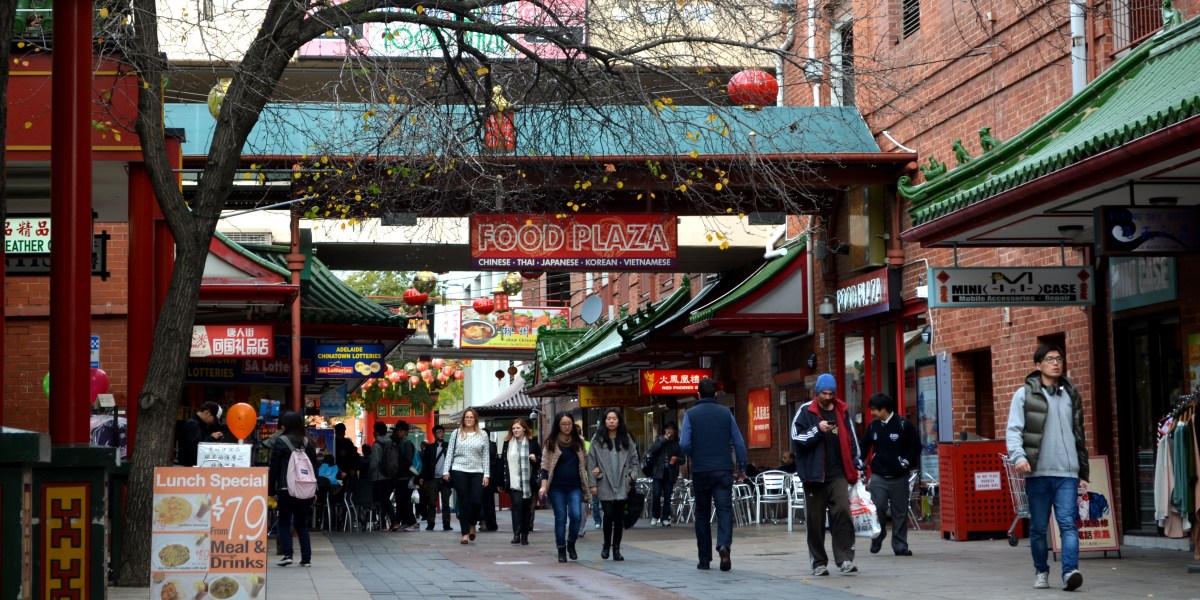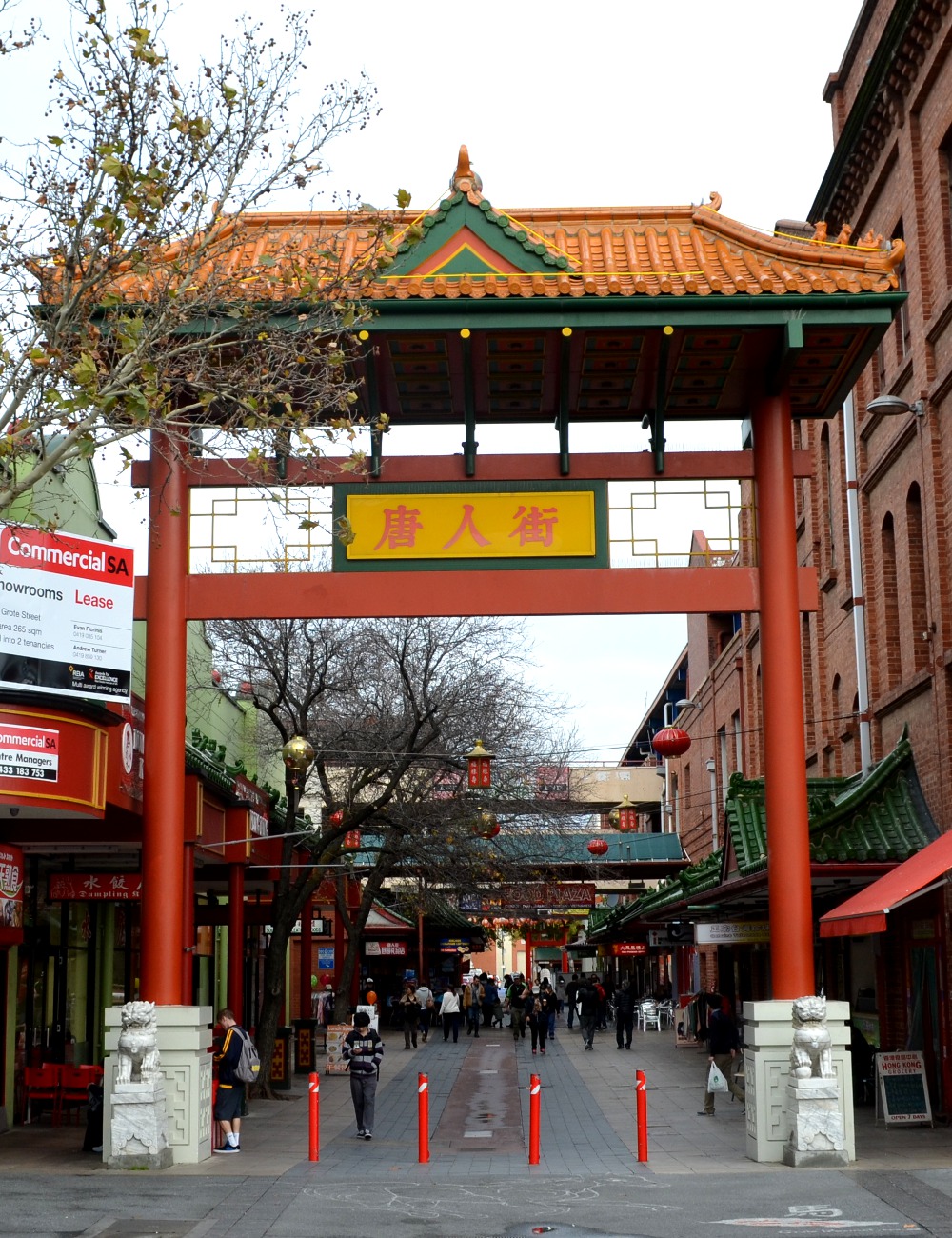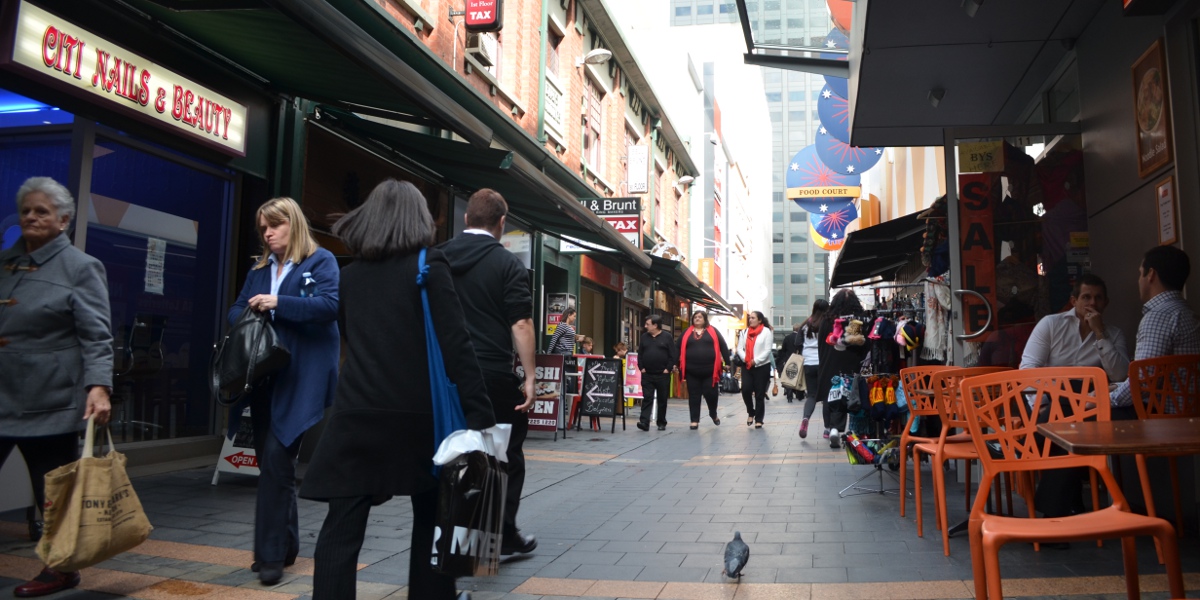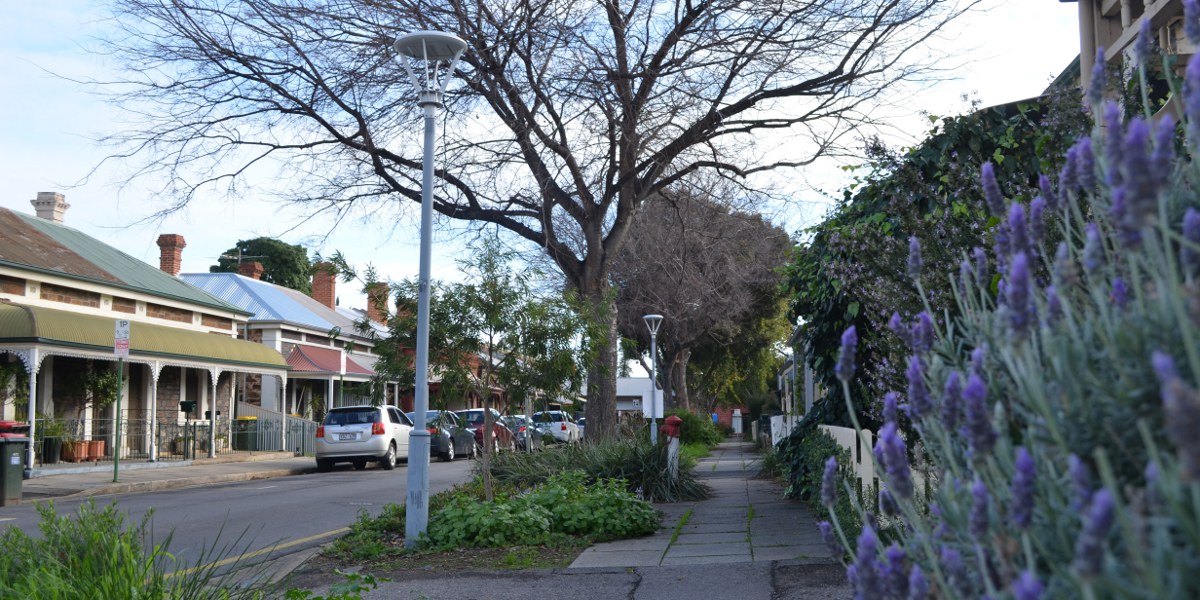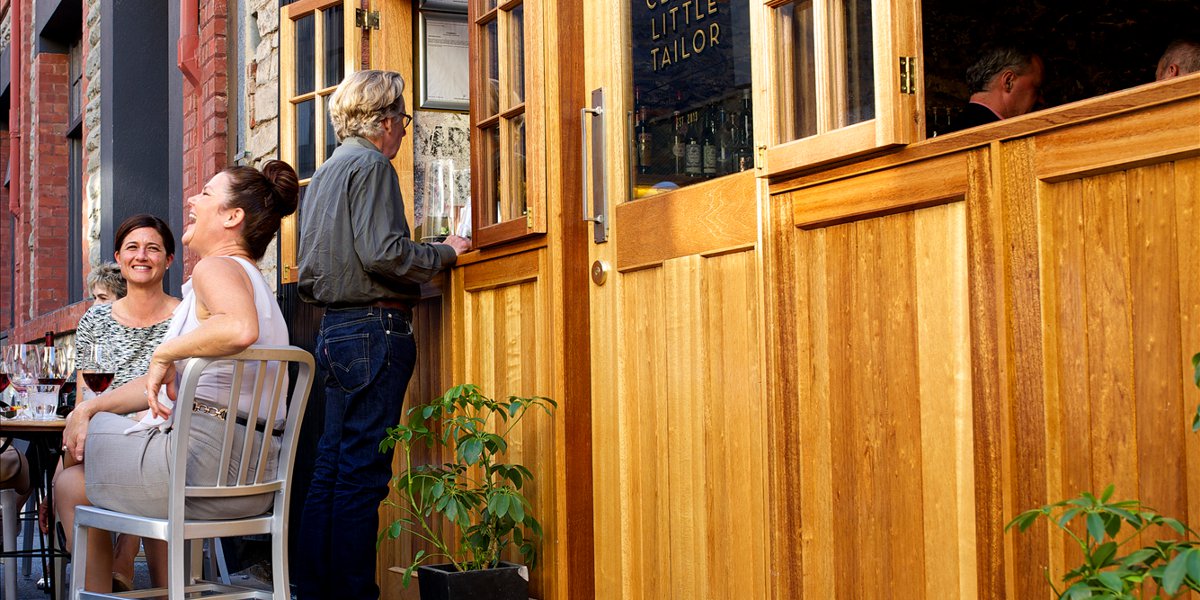Yarwood’s favourite Adelaide streets

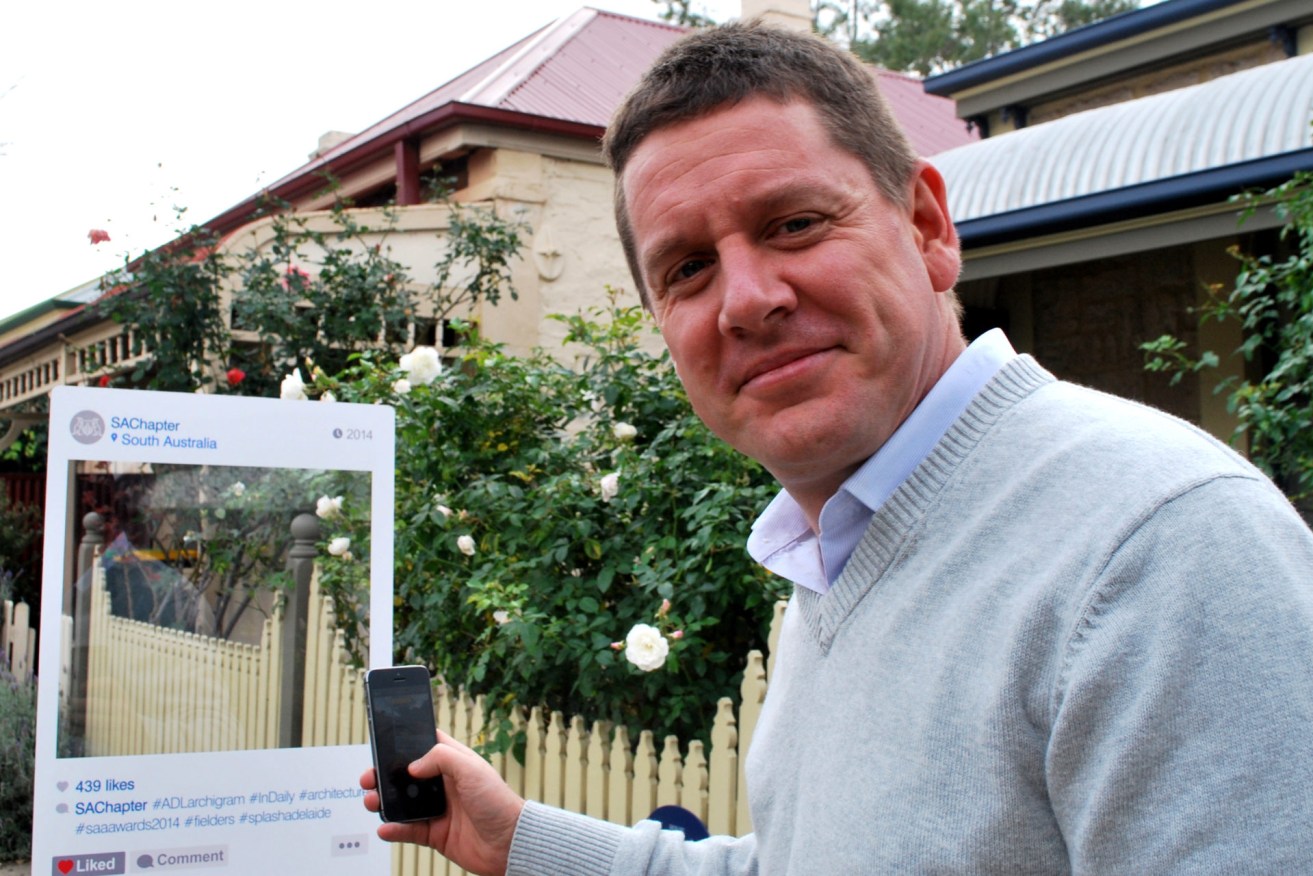
Lord Mayor Stephen Yarwood on his #ADLarchigram walk.
Adelaide Lord Mayor Stephen Yarwood has often said that he is not a politician, but rather, an urban planner.
Whatever the merits of the claim, he undoubtedly has a fascination with streetscapes.
Since the beginning of his urban planning degree in the early 1990s, the interaction of people with spaces has been a vital cog in the Yarwood machine.
“I’ve always thought that a university undergraduate degree is like an operating system for your brain,” Yarwood says. “It gives you a set of values in which to look at the world and interpret the world in your way, and certainly my urban planning degree shaped how I see the world around me.”
Yarwood takes us on a tour of his favourite Adelaide streets in the final of our #ADLarchigram series*.
COMMENT BELOW: Which are your favourite Adelaide streets?
Moonta Street
Adelaide’s Chinatown precinct is a pedestrian street buzzing with diners and shoppers.
“I just think it’s got a great vibe,” says Yarwood. “It’s a street that is widely loved but not necessarily appreciated.
“A very important gateway to not only our past, but also our future, in terms of the way the world is moving.”
Moonta Street began to flourish with the influx of Asian immigration in the 1970s and ’80s.
Traditional Chinese archways – paifang – at each end of Moonta Street were jointly donated by the Adelaide City Council and the Chinese Government in 2004. The street also features pagoda-style roofs, dozens of restaurants and shops, and red lanterns from Adelaide’s sister city Qingdao.
Chinese New Year here is one of Adelaide’s largest multicultural events.
Moonta Street also offers a window into the Lord Mayor’s aspirations for Adelaide.
It is “a street we should celebrate because if anyone suggested running cars down it now there would be outrage”, he says.
“It is just accepted that this is a pedestrianised space. It is just a pity that we cannot do this in more places, and certainly for me this is a sign of the future of Adelaide.”
James Place
This street has experienced the fastest increase in pedestrian movement of any street in the city over the past decade. James Place has enjoyed an increase in shoes-on-pavement of around 1000 per cent over that time.
“Outdoor dining has really seen a significant shift in the amenity of that space, which, in itself, really says a lot about what Adelaide really can do well and is capable of,” says Yarwood.
“I would like to see more laneways like James Place pop up over time.”
A large part of the street’s appeal is in the renewed establishment of good businesses, providing a variety of goods and services in the one location.
“It’s the mix of the buildings, it’s the scale of the street, it’s the choice, the cafes, the restaurants that are popping up,” Yarwood says. “They’re affordable and unpretentious, but also have a specific style that is clearly appealing to people’s tastes.
“All the coffee bars and the outdoor dining here and all the young business owners say so much about where the city is at and where it can go.”
McLaren Street
Lined with early settlement workmen’s cottages, McLaren Street is a modern expression of Adelaide’s past.
“It is a beautiful street and genuinely talks about the heritage of the city and the validity in respecting the complete heritage package versus just listing one or two buildings,” Yarwood says.
“This street talks to the magnificence of the integrity of the built form as a streetscape, and the amenity and quality of character that that can actually build.”
According to Yarwood, two things make this street extraordinary on the city landscape: “A) – A consistency in built form, where everyone almost has the same thing, and B) – the intimacy of the street and the scale of the landscaping.
“I love a tight street where the cars have to drive slowly and no-one would come down here. Traffic would be very minimal.”
Peel Street
According to the Lord Mayor, this Hindley Street-Currie Street connector is “the hottest street in town”.
Over recent years, a few, high-quality businesses have entered Peel Street and transformed the atmosphere there.
“For me, Peel Street really does show that journey from the probable to the possible and then through to the potential,” says Yarwood.
“Just two or three years ago, this was a street that wasn’t really a destination, whereas now, there are three bars and a restaurant.
“What makes it truly great is the entrepreneurs that are actually rolling up their sleeves, regenerating buildings and making them look fantastic, and actually providing great service that’s attracting lots of people.
“It really has been a catalyst site for the transformation of the West End.”
*In collaboration with the SA Chapter of the Australian Institute of Architects.
